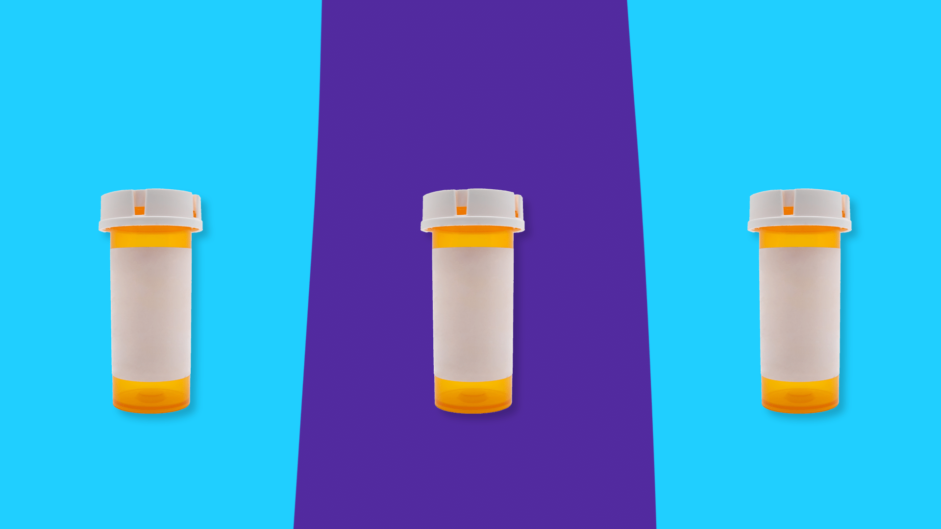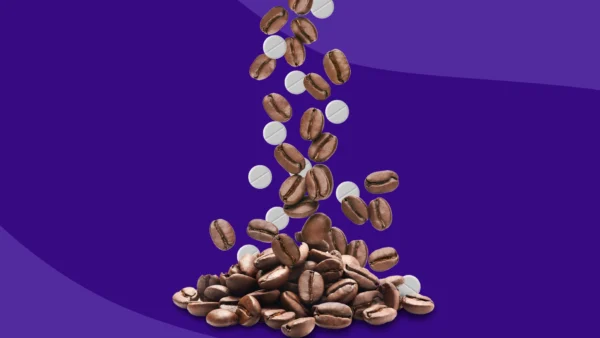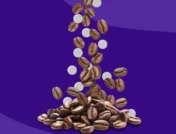Comparison | Toprol XL | Coreg | Ernesto | Zestril | Calan | Natural alternatives | How to switch meds
Lopressor (metoprolol tartrate) is a brand-name medication in a well-known drug class called beta-blockers. Beta-blockers are used in the management of several conditions associated with heart problems, including high blood pressure (hypertension), chest pain (angina), an irregular heartbeat called atrial fibrillation (afib), a heart arrhythmia known as ventricular tachycardia (fast heart rate), myocardial infarction (MI, or a heart attack) with left ventricular dysfunction, and congestive heart failure. They’ve also been found to be effective additions to traditional anti-thyroid medications in the setting of hyperthyroidism and in migraine prevention.
The beta-blocker drug class can be further subclassified into those agents which are considered non-selective agents, (cardio-) selective agents, agents with alpha-1 antagonist activity, and those with intrinsic sympathomimetic activity. Metoprolol is a cardio-selective beta-blocker and may be a preferred agent to manage patients with underlying conditions mentioned above who also suffer from chronic obstructive pulmonary disease (COPD). Being cardio-selective, metoprolol will only block beta receptors in the heart (beta receptors are also found throughout pulmonary tissue, and if blockage of those receptors occurs can exacerbate COPD). Side effects of metoprolol which may require seeking alternative therapy include a decreased heart rate (bradycardia), hypotension (low blood pressure), and its tendency to cause mild weight gain.
Other drug classes used to treat similar conditions as beta-blockers include angiontenin-converting enzyme inhibitors, (ACEIs), angiotensin II receptor blockers (ARBs), aldosterone antagonists, calcium channel blockers (CCBs), vasodilators, diuretics, and medications which control the heart rate or heart rhythm. The reasons for a patient to be on one beta-blocker over an alternative within the same class or crossing over into a different drug class are plentiful, generally based on the underlying condition being treated and other medical conditions present. Drug interactions and adverse effects may also come into play. Here we will discuss the reasons why a patient may need to seek an alternative to Lopressor.
What can I take in place of metoprolol?
Compare metoprolol alternatives |
||||
|---|---|---|---|---|
| Drug name | Uses | Side effects | Dosage | Saving options |
| Lopressor (metoprolol tartrate, immediate-release) |
|
|
12.5 mg twice daily to 200 mg twice daily (based on indication) | Lopressor coupons |
| Toprol XL (metoprolol succinate, extended-release) |
|
12.5 mg once daily to 400 mg once daily (based on indication) | Toprol XL coupons | |
| Coreg (carvedilol) |
|
|
3.125 mg twice daily to 25 mg twice daily | Coreg coupons |
| Entresto (sacubitril/valsartan) |
|
|
24 mg/25 mg to 97 mg/103 mg twice daily | Entresto coupons |
| Zestril (lisinopril) |
|
|
2.5 mg once daily to 80mg once daily (based on indication) | Lisinopril coupons |
| Calan SR (verapamil, extended release) |
|
|
120 mg once daily to 240 mg twice daily (based on indication) | Calan SR coupons |
| Tenormin (atenolol) |
|
|
25 mg to 200 mg once daily (based on indication) | Atenolol coupons |
| Bystolic (nebivolol) |
|
|
5 mg to 40 mg once daily | Bystolic coupons |
| Corgard (nadolol) |
|
10 mg to 240 mg only daily (based on indication) | Corgard coupons | |
| Inspra (eplerenone) |
|
|
25 mg once daily to 50 mg once daily | Inspra coupons |
| Aldactone (spironolactone) |
|
|
12.5 mg once daily to 25 mg twice daily | Aldactone coupons |
| BiDil (Isosorbide dinitrate/hydralazine) |
|
|
20 mg/37.5 mg three times daily to 40 mg/75 mg three times daily | BiDil coupons |
Other alternatives to metoprolol
- Inderal LA (propranolol, extended release)
- Blocadren (timolol)
- Betaxolol
- Bisoprolol
- Labetalol
- Acebutolol
- Captopril
- Accupril (quinapril)
- Altace (ramipril)
- Mavik (trandolapril)
- Atacand (candesartan)
- Adalat CC (nifedipine extended-release)
- Cardizem CD (diltiazem extended-release)
- Lanoxin (digoxin)
Toprol XL (metoprolol succinate)
Metoprolol tartrate is a cardio-selective beta-blocker that has an FDA-approved indication for the management of heart failure. Beta-blockers in the setting of heart failure are generally indicated for those with heart failure with reduced ejection faction (HFrEF). Toprol XL is an extended-release formulation of metoprolol tartrate immediate release and retains cardio-selective beta-blockade. It also has an FDA-approved indication and is an alternative to immediate-release metoprolol tartrate in the management of certain stages of heart failure. Toprol XL demonstrated a reduction in cardiovascular complications and hospitalization in this patient population when compared to placebo. With this efficacy data, it may be a good therapeutic option in those patients who also suffer from asthma or COPD, given its cardio-selective activity, by preventing the side effect of shortness of breath. In comparison to immediate-release metoprolol, it can be administered once daily. Toprol XL is a preferred beta-blocker (over immediate-release metoprolol tartrate) in the management of HFrEF.
Coreg (carvedilol)
Coreg (carvedilol) is an agent with some alpha-blocker activity in addition to its non-selective beta-blockade and is an alternative beta-blocker for the management of HFrEF. Carvedilol is preferred over immediate-release metoprolol for this condition given its demonstration of a greater reduction in mortality. Coreg has demonstrated a reduction in mortality in both moderate to severe stages of heart failure, with the strongest evidence for benefit in severe failure. Since it does exhibit some alpha-blocker activity, it can cause peripheral vasodilation (or relaxation of blood vessels) and lower blood pressure more in comparison to metoprolol. It is a preferred beta-blocker in the management of HFrEF, similar to Toprol XL (metoprolol succinate). Carvedilol may be selected as a beta-blocker alternative to metoprolol in patients at risk for the development of hypoglycemia, as the odds of developing low blood sugar in the setting of a selective beta-blocker (such as metoprolol or atenolol) have shown to be higher than for non-selective beta-blockers.
Entresto (sacubitril/valsartan)
Entresto is the first in a drug class known as angiotensin receptor neprilysin inhibitors (ARNI) and is indicated for symptomatic patients with HFrEF. Valsartan is a known angiotensin receptor blocker (ARB), and sacubitril enhances valsartan’s efficacy by inhibiting the enzyme neprilysin, ultimately increasing sodium loss and causing vasodilation to minimize aggravation of heart failure. This medication has demonstrated the ability to prevent cardiovascular death or HF hospitalization in 1 of 21 patients treated for 2 years (versus an ACEi). It may cause low blood pressure, so might be a better alternative to cardio-selected metoprolol in patients with hypertension.
Zestril (lisinopril)
In patients with the category of heart failure with preserved ejection fraction (HFpEF) or stable coronary artery disease with hypertension, an angiotensin-converting enzyme inhibitor (ACEi) such as Zestril (lisinopril) may be an alternative to metoprolol. Lisinopril can help meet guideline recommendations to achieve a systolic blood pressure of less than 130 mmHg and a diastolic blood pressure less than 80 mmHg. In those patients with HFrEF, lisinopril might be added to a preferred beta-blocker in this setting. In patients with underlying kidney disease resulting in proteinuria, lisinopril is a good option for therapy as well.
Calan (Verapamil)
Atrial fibrillation, an irregular heart rate, is common in patients with HFpEF. Guidelines recommend management of atrial fibrillation in HFpEF with a rate-controlling medication like verapamil. It is preferred over metoprolol in the setting of COPD or bronchospasm for this indication but should be avoided in the management of HFrEF.
Natural alternatives to metoprolol
For the conditions in which metoprolol is used as pharmacologic management, there are many lifestyle changes and diet modifications that should be undertaken simultaneously to improve long-term outcomes. For example, in the setting of heart failure patients should be educated on self-care (including monitoring their weight regularly), reduction of salt intake, and regular exercise. In the setting of hypertension, guidelines suggest that each kilogram of weight lost can reduce systolic blood pressure (SBP) by 1 mmHg, a heart-healthy diet can reduce SBP by 11 mmHg, cutting dietary sodium intake by 25% can reduce SBP by 5 mmHg, and following a structured exercise program of at least 150 minutes of aerobic activity each week can reduce SBP by 5 mmHg.
Some foods have been demonstrated to be natural sources of beta-blockade, including fish, garlic, hawthorne berries, and certain vitamins and supplements (such as potassium). As always, one should seek the medical advice of healthcare professionals before seeking natural alternatives to metoprolol tartrate.
How to switch to a metoprolol alternative
Before switching metoprolol to one of its alternatives, it is best to do so in conjunction with the medical advice of a healthcare professional. Reasons for alternatives to be considered suboptimal therapeutic options based on your unique situation may not be obvious, and it is important to have these alternatives evaluated carefully by a healthcare provider who knows the entirety of your medical history. In addition, abrupt discontinuation of long-term use of beta-blockers like metoprolol can cause withdrawal-like symptoms, resulting in rebound hypertension, tachycardia heart arrhythmias, or an angina attack. Therefore, beta-blockers must be slowly tapered off over the course of a week or longer, at which time alternative medications can then be added. Using a prescription discount card from SingleCare may help reduce the cost of metoprolol and its alternatives at participating pharmacies.
Lea este artículo en español aquí.
Sources
- Hyperthyroidism: Diagnosis and Treatment, American Family Physician (2005)
- Body weight changes with beta-blocker use: results from GEMINI, The American Journal of Medicine (2007)
- Effects of Controlled-Release Metoprolol on Total Mortality, Hospitalizations, and Well-being in Patients With Heart Failure, JAMA (2000)
- Effect of Carvedilol on the Morbidity of Patients With Severe Chronic Heart Failure, Circulation (2002)
- Effect of beta blocker use and type on hypoglycemia risk among hospitalized insulin requiring patient, Cardiovascular Diabetology (2019)
- 2017 ACC/AHA/AAPA/ABC/ACPM/AGS/APhA/ASH/ASPC/NMA/PCNA Guideline for the Prevention, Detection, Evaluation, and Management of High Blood Pressure in Adults: A Report of the American College of Cardiology/American Heart Association Task Force on Clinical Practice Guidelines, Hypertension (2017)
- Hypertension: Is It Time to Replace Drugs With Nutrition and Nutraceuticals? Pharmacy & Therapeutics (2014)
- Beta-blocker Rebound Phenomenon in an Adolescent with Graves’ Disease, Journal of Clinical Research in Pediatric Endocrinology (2022)











